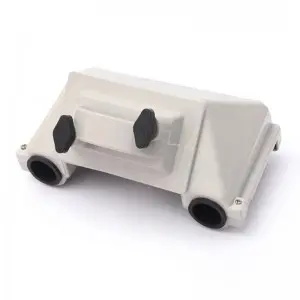The role of disconnectors in power systems
Disconnect switches, also known as circuit breakers or disconnect switches, are critical components in power systems. They are used to isolate specific sections of electrical systems for maintenance, repair or replacement. This article will provide a product description, explain how to use disconnect switches, and discuss the environments in which they are used.
Product Description
A disconnect switch is designed to break the electrical connection between two conductors, ensuring that a circuit is completely de-energized for maintenance or repair. What distinguishes them from other types of switches is their ability to provide a physical gap between two conductors, isolating one conductor from another. Disconnectors do not arc when open, making them essential for working on live electrical equipment.
Disconnectors come in different sizes, voltage ratings and configurations. They can switch single or multi-pole circuits, have visible or hidden contacts, and can be operated manually or electrically. In addition, the insulating material in disconnectors determines their operating frequency, the temperature they can withstand, and their mechanical strength.
use isolating switch
Disconnect switches are convenient to use, but improper operation or lack of knowledge can lead to serious consequences. Before using an isolator, it must be ensured that the circuit is correctly rated for the voltage, that users are adequately trained, and that all safety requirements are met.
To use an isolation switch, the user should follow specific steps such as wearing protective equipment, isolating the circuit, and physically locking the switch in the off position. This ensures that the circuit is completely de-energized and that the switch adequately isolates the device or system being worked.
use environment
Disconnectors operate under harsh conditions and their performance can be affected by many factors. These factors include temperature changes, humidity, mechanical forces and various types of pollution. Environmental factors can shorten the service life of the disconnector and create operational hazards such as fire or electric shock.
To reduce these risks, disconnectors are designed to withstand harsh environments and rigorously tested under different conditions. They're also third-party tested to ensure they'll perform well in a variety of conditions, including sub-zero temperatures, extreme heat, and harsh chemical environments.
in conclusion
In summary, a disconnector is an important component in a power system, used to isolate various parts of the system for maintenance and repair. They are designed to break a circuit by physically separating the conductors and ensuring that the circuit is completely de-energized. Disconnectors come in different sizes, voltage ratings and configurations designed to withstand harsh environments. Isolation switches must be used correctly, following all necessary precautions to ensure user safety and effective operating performance.

Post time: May-26-2023




